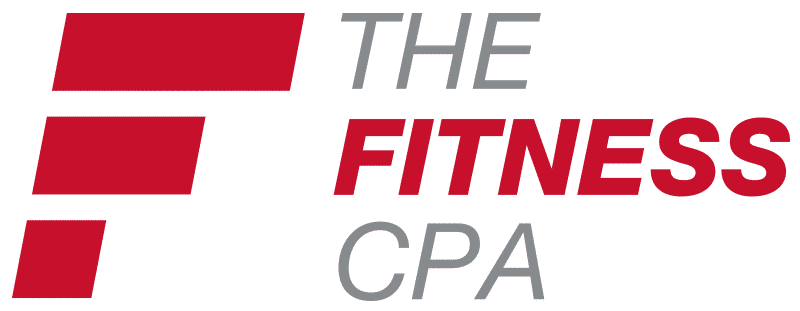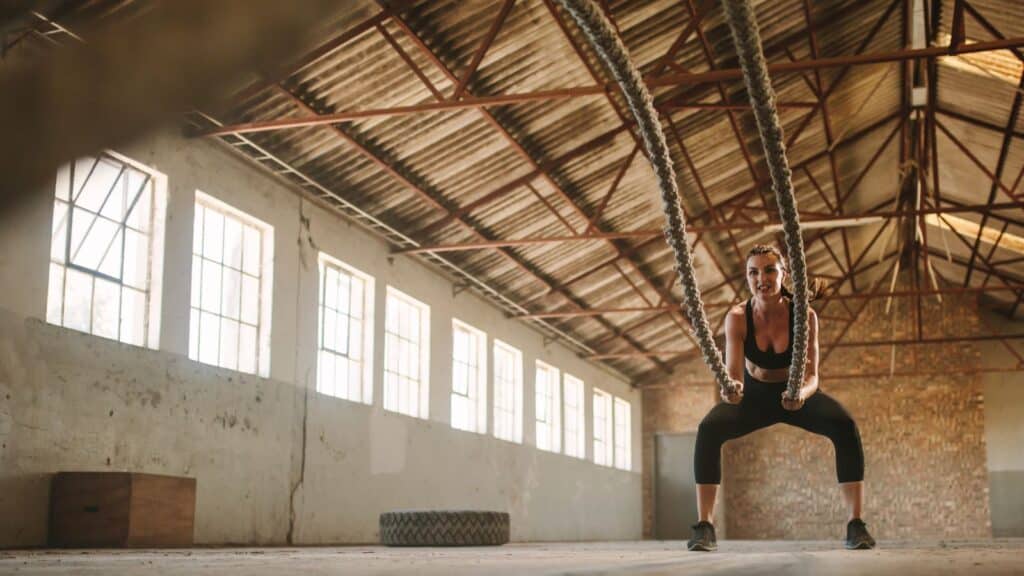Key Takeaways
-
A balance sheet shows what your gym is worth. It’s a snapshot of what you own, what you owe, and what’s left over for you as the owner.
-
Understanding equity matters. Owner’s equity grows when you reinvest profits or add your own money, and shrinks when you take out distributions or the business loses money.
-
Working capital is your daily lifeline. It’s the cash cushion that helps you cover everyday expenses. We recommend keeping at least 1–2 months’ worth on hand.
-
Red flags can signal bigger problems. Keep an eye out for low cash, high debt, or negative equity so you can fix small issues before they turn into big ones.
Running a fitness business is all fun and games until your accountant starts talking about income statements and balance sheet for gyms.
Suddenly, you’re lost in terms that sound important but don’t make much sense. You probably know they’re key to understanding your business’s financial health, but they can still feel overwhelming.
And it’s not just your accountant who brings them up. The bank, a creditor, or even a potential investor might ask for these documents.
The truth is, the balance sheet is one of the most important financial statements for any business. Even if you’re not an accountant, it’s important to know what a balance sheet is, why it matters, and how it affects your business.
What Is a Balance Sheet?
Let’s start with the basics. A balance sheet is a financial statement that shows how much your business is worth at a specific point in time.
In simple terms, it’s a snapshot of your business’s overall value, or how much wealth your business has built up.
Why Is a Balance Sheet For Gyms Important?
Because the whole purpose of business is to create wealth— or value — through satisfying the needs and wants of consumers, a balance sheet is like a report card on your business purpose.
Unlike an income statement, which is a one-year report card, a balance sheet is a business’s lifetime report card. Because of this, it’s more comprehensive and meaningful. That’s why potential investors put a premium on it.
Also, while an income statement reveals the profit or loss your business has generated over a specified period, usually one year, a balance sheet indicates the value of your business at any time.
In cash language, you may want to view the balance sheet as your bank statement’s running balance. On the flip side, you may wish to view your income statement as the net sum of your bank statement’s inflows and outflows in a given year.
As you might already know, the bank statement does not capture all financial events, and we’ve just used it here for illustration purposes.
Then again, some people call a balance sheet a “Statement of Financial Position” or a “Statement of Assets and Liabilities.” Don’t get confused. They all mean the same thing.
What Goes Into a Balance Sheet?
A balance sheet is based on a simple idea: what you own (your assets) is always equal to what you owe (liabilities) plus the total of what you’ve invested (equity).
This is shown as Assets = Liabilities + Equity
Here’s a breakdown of what you’ll see on the balance sheet for gyms:
Assets:
These are the things your business owns that are worth money. We break them out into short-term and long-term assets.
- Short-term assets: Items that can quickly be turned into cash within a year.
- Cash
- Deposits in Transit
- Inventory
- Short-term Investments
- Accounts Receivable (money owed to you)
- Prepaid Expenses (like rent or insurance paid in advance)
- Long-term assets: Items that take longer to convert to cash or hold lasting value.
- Fixed Assets (like gym equipment or buildings)
- Long-term Investments (like CDs, or Crypto—though less common in fitness businesses)
- Intangible Assets (like trademarks or patents)
Liabilities:
These are the amounts your business owes to others. These could be broken out into short and long-term on the balance sheet; however, for smaller businesses, they are usually combined.
- Short-term liabilities: Debts or bills that must be paid within a year.
- Credit Cards
- Lines of Credit
- Accounts Payable (unpaid bills)
- Wages Payable (money owed to employees, often in transit via check or bank transfer)
- Long-term liabilities: Debts that don’t need to be paid off for more than a year.
- Loan balances and other financing arrangements, like certain equipment leases
Owner’s Equity:
This is the money you’ve invested in your business (Capital Contributions), less profits commonly distributed to shareholders like you (Distributions), plus profits that have been kept in the business (Retained Earnings). Equity represents your stake in the company after all liabilities are paid.
See our example:
The Balance Sheet Formula Example
Let’s look at a simple example of the accounting formula:
Assets = Liabilities + Equity
Imagine you start your gym business with a capital contribution of $300,000 from your personal savings. You use half of that to buy equipment like treadmills and dumbbells which leaves you with:
- Equipment (Assets): $150,000
- Cash (Assets): $150,000
So, your total assets are $300,000, which is equal to your investment (equity) of $300,000 and no liabilities ($0). Here’s how this looks in the balance sheet formula:
Assets ($300,000) = Liabilities ($0) + Equity ($300,000)
The balance sheet for gyms is simply a way to organize this formula. Sometimes, you’ll see it laid out in a “T” format, with assets on one side and liabilities and equity on the other, like this:
| ASSETS | LIABILITIES |
| Equipment: $150,000 | Liabilities: $0 |
| Cash: $150,000 | Equity: $300,000 |
| Total: $300,000 | Total: $300,000 |
Other times, the balance sheet is shown vertically, like this:
Current Year Assets Equipment $150,000 Cash $150,000 Total Assets $300,000 Liabilities $0 Equity $300,000
Even though balance sheets can become more detailed as your business grows, the basics stay the same. Your profit is added to your equity, while any loss is subtracted.
By understanding this formula, you’ll have a clearer picture of your gym’s financial health.
A Closer Look at Owner’s Equity, Capital, and Retained Earnings
While assets (what you own) and liabilities (what you owe) are pretty straightforward, equity can be a little trickier to grasp. So let’s break it down.
What Is Owner’s Equity?
In simple terms, owner’s equity is the money you, as the owner, have put into your business, plus any undistributed profits that have accumulated to date. It represents your stake in the business after paying off all business debts.
There are a few ways to increase your owner’s equity, such as putting more of your own money into the business, which is known as a capital contribution. Another way is by leaving profits in the business rather than taking them out—this is referred to as retained earnings.
On the other hand, owner’s equity can decrease when you take money out of the business for personal use, known as distributions. Additionally, if the business experiences losses, it reduces the value of your equity.
A quick guide to follow—
Increase Owner’s Equity:
- Capital Contributions: Adding more of your own money into the business.
- Profit: Keeping the profits in the business instead of paying them out which increases retained earnings.
Decrease Owner’s Equity:
- Distributions: Taking money out of the business for personal use.
- Losses: If your business loses money, it lowers the value of your equity.
What About Working Capital?
Working capital is the difference between your short-term assets (like cash and what customers owe you) and your short-term liabilities (like bills or loans that are due soon).
In simple terms, it’s the money you have available to cover your day-to-day expenses.
While working capital isn’t explicitly displayed as a single line on the balance sheet, it’s important to understand because it’s a key indicator of your business’s financial health. It shows whether your business has enough cash flow to handle short-term obligations and keep running smoothly. We recommend our clients keep at least one to two months of expenses as working capital at all times.
What Red Flags Should You Look for on Your Balance Sheet?
Just like your income statement, the balance sheet for gyms isn’t just another financial document to file away. It’s important to review it regularly and keep an eye out for signs that could indicate financial trouble.
Here are a few red flags to watch for:
- Low Cash Balance: If your cash reserves are low, you might struggle to cover everyday expenses or handle unexpected costs. It’s important to maintain enough cash to keep your business running smoothly.
- High Liabilities: When your liabilities (debts) are higher than your assets, it means you’re relying too much on borrowing. This could strain your cash flow and make it difficult to pay off what you owe or invest in growth.
- Low Working Capital: If your working capital (the difference between short-term assets and liabilities) is low, it means you don’t have enough liquid assets to cover your short-term obligations. This can make it tough to manage bills and day-to-day operations.
- Negative Owner’s Equity: A negative owner’s equity balance means your business is running at a loss, or you’re pulling out more money than you should. In this case, your liabilities exceed your assets, which could point to financial instability and difficulty repaying debts.
By watching out for these red flags, you can catch issues early and keep your business on track. If you notice any of these warning signs, the best idea is to talk to your accountant and get professional advice on how to address them.
Action Steps for Handling Your Balance Sheet
Now that you know what to look for, take a moment to review your latest balance sheet and get familiar with the numbers.
Keep an eye out for any red flags like low cash balances, high liabilities, or low working capital. And if something doesn’t look right, it’s a good idea to meet with your accountant to figure out the next steps.
If you’re looking for a dedicated gym accountant, get in touch with us at The Fitness CPA. We’re here to help—this is what we do!
Simply head over to our contact page to get started.
Keep an eye out for our upcoming series, where we’ll dive deeper into the income statement.
Until then!
- Which Of Your Tennis Club Programs Are Actually Profitable? - September 30, 2025
- Why Your Fitness Studio Needs a Google 360 Tour - August 15, 2025
- Fitness Bookkeeping Made Simple: A Beginner’s Guide - July 14, 2025

